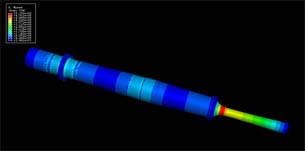Morgan Technical Ceramics Announces its Co-Fired Piezo Bimorph Elements
Co-fired PZT bimorphs designed for use in high temperature applications.
Latest News
November 24, 2010
By DE Editors
 |
Morgan Technical Ceramics’ ElectroCeramics business (MTC) designs and manufactures co-fired piezo (PZT) bimorph elements for use in aerospace, medical, automotive and general industrial sensor and actuator applications. The co-fired PZT bimorph elements are more mechanically stable than a conventional bimorph and are ideal for harsh environments, according to the company. They are increasingly being used in aerospace applications, where mechanical and electrical stability are key performance attributes.
One use of co-fired PZT bimorphs is in high-temperature applications, including oil exploration, machine and equipment monitoring, automotive engine, feedback sensors and high temperature accelerometers. Other common uses include rate and gyroscope sensors for aerospace and automotive applications, intrusion alarms and actuators within fine micro-manipulation mechanisms, including computer hard drives and aerospace valves.
MTC’s co-fired PZT bimorphs are a two-layer PZT device, configured with a central encapsulated electrode region. Similar in construction to a conventional bonded bimorph, the co-fired bimorph is fired at a temperature that sinters the two PZT layers into a monolithic structure separated only by the inner electrode.
MTC manufactures the co-fired bimorphs from PZT5A3, PZT702, and PZT5H2. Among the PZT materials used, MTC’s PZT702 has excellent aging characteristics, low signal to noise ratio and high sensitivity for impact and sound sensing.
For more information, visit Morgan Technical Ceramics.
Sources: Press materials received from the company and additional information gleaned from the company’s website.
Subscribe to our FREE magazine, FREE email newsletters or both!
Latest News
About the Author
DE’s editors contribute news and new product announcements to Digital Engineering.
Press releases may be sent to them via [email protected].






